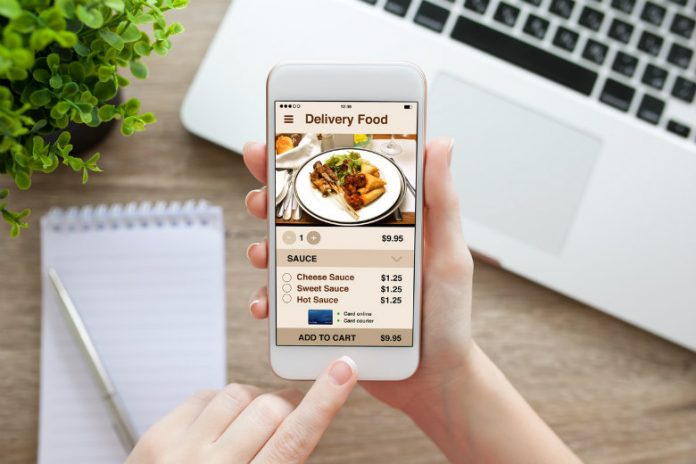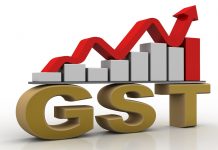This article is written by Shreya Ganapathy pursuing a Certificate Course in Advanced Corporate Taxation from LawSikho. The article has been edited by Zigishu Singh (Associate, LawSikho) and Smriti Katiyar (Associate, LawSikho).
Table of Contents
Introduction
You would get an idea of the changing landscape of the food industry by visiting your favourite restaurant. You would notice a bunch of people decked in orange or red t-shirts chattering and waiting at the doorstep. This is a common sight across major restaurants in almost all the cities in India, big or small. This is a fine first-hand experience you can have of the market disruption caused by food delivery startups. But is everything well in the sector growing exponentially on the back of instant deliveries by gig economy workers?
In this article, we look at the impact of the GST laws applicable to food delivery partners. “The only way to encourage the use of technology and to incentivize restaurants to use online delivery partners is by reducing the GST rate, which would add to the growth of this theme.” – Kunam Wadhwa, Indirect Tax, PwC India
Goods and Services Tax (GST) rates reduction and Input Tax Credit (ITC) withdrawal
Recently, GST rates were reduced for eating outlets. This caused quite a stir. The erstwhile 18% GST was reduced to 5%. However, this decision was coupled with the decision to withdraw input tax credit for the provision of these services. Input tax credit refers to GST paid on raw materials or procurements that can be set off against future tax liability of a certain kind. This decision directly led to restaurants charging higher prices on online food delivery platforms like Zomato, Swiggy, and Foodpanda. On the other hand, some restaurants have opted for commission cuts with their online food delivery partners.
Some key points to note post-ITC withdrawal
Online food delivery services are provided at a commission of around 20 percent (including 18% GST).
- Restaurants can no longer claim ITC on the 18 percent GST against input services from these delivery platforms.
There is immense pressure from restaurants on online food delivery services to cut margins.
Impact of ITC withdrawal and reduction of tax rates
1. ITC withdrawal has led to a price hike on the food sold by many restaurants. It is expected that most other restaurants will follow the suit. Lack of ITC is not feasible for most restaurants.
2. The increased prices could severely dampen the growth of online food delivery services.
3. The total number of registered restaurants on food delivery platforms stands at 100,000. About 70% of the orders on these platforms are through digital payments. This is a great facilitator for the government’s digital payment campaign. A reduced GST will go a long way in further promoting the digital campaign.
4. Scalability will be most impacted. Growth plans via new franchise outlets for marquee restaurants will be less feasible. In comparison to the five percent GST on food bills, the GST on royalty and franchise fees is 18 percent. This could clearly chain the Rs 200-billion restaurant chain sector which is currently growing at 22 percent annually.
Change in GST collection point
Meanwhile, in the 45th GST Council Meeting held on 17th September 2021, the GST council announced that cloud kitchens and food delivery platforms like Zomato, Swiggy, Foodpanda, etc would be charged GST at a rate of 5% with effect from 1.1.2022.
“Food delivery operators like Swiggy who collect orders from restaurants and deliver (to customers) the place where the food is delivered will be the point on which tax will be collected by the gig groups Swiggy and others,” Finance Minister Nirmala Sitharaman said.
This decision is based on the GST Fitment Committee’s recommendation to the Council that e-commerce operators (ECOs) be required to pay GST on restaurant services provided through them.
So far, such food delivery platforms collected GST from customers and gave it back to the restaurant. On the food bill, restaurants listed on food delivery apps pay a 5 percent GST. The commissions that food delivery aggregators charge restaurants for providing delivery and marketing services are subject to 18 percent GST. After receiving the GST collected by the food delivery platforms, the restaurants were supposed to pay it to the government. Food delivery platforms were also entrusted with the responsibility to collect TCS (Tax Collected at Source) at the rate of 1% on the taxable value of supplies made by the restaurants through them.
The system in place was confusing and led to tax evasion. The Department found huge differences between the taxable value reported by Food Delivery platforms in the TCS returns filed and the taxable value of supplies reported by restaurants in the returns. Restaurants would not deposit the tax collected by the food delivery platforms with the government
Henceforth, the food delivery companies will collect tax from customers and directly deposit it with the government on behalf of the restaurants.
Revenue Secretary Tarun Bajaj said that this decision was taken after analysis of the GST returns where it was observed that some unregistered restaurants were evading taxes. He said “Analysis – of returns filed by delivery apps and some Haryana restaurant services – showed the gap in taxable turnover for suppliers where TCS was deducted by a delivery app was greater than turnover declared by such suppliers. The evasion amount is believed to be substantial as food delivery apps have high supply volumes”
How will this impact food delivery platforms?
- For food delivery platforms, this will also add more burden of compliance towards collecting and depositing taxes on behalf of the restaurants and maintaining additional records.
- The move may also create some confusion in terms of the applicability of input tax credits, for which food aggregators are expected to seek clarifications from the government.
- As a result of the move, the smaller restaurants that did not pay GST so far will have to renegotiate contracts with food delivery platforms to accommodate the changes caused by the new GST regulation
- Zomato and Swiggy, have also reached out to the government and sought clarification around the recent decision to treat them on a par with restaurants under the GST framework.
- The companies seek clarity around how the GST would be levied and whether this could lead to “tax cascading” or problems in claiming input tax credits.
How will this impact restaurants?
This new GST rule will impact small restaurants, especially the ones having an annual turnover of less than Rs 20 lakh, as these restaurants were earlier not required to be registered under GST. As a result of this decision, the restaurants will also have to mandatorily register themselves like other e-commerce sellers.
Also, after this new rule, there will be an additional compliance burden on most restaurants, as they will have to maintain two separate accounts — one for their regular business done and the second for the business done through Zomato or Swiggy. Tax experts have observed that the way the GST framework works, some of the smaller restaurants may see their costs increasing going ahead.
“The last thing which must happen is the increase of cost when the delivery takes place from those suppliers which are currently exempt under the tax system. One way to extend exemption is to specifically exempt when the delivery by the online operator is made with respect to the goods of small suppliers,” said Abhishek A Rastogi, partner at law firm Khaitan & Co.
As per the current regulations restaurants pay 5% GST, but they do not get an input tax credit on that. Some of the smaller restaurants and cloud kitchens do not pay GST currently. The new GST regulations however might result in them having to cough up taxes. These small restaurants fear that they may have to increase the price, which could consequently impact their demand.
Impact on customers
Revenue Secretary Tarun Bajaj clarified that no new taxes have been introduced nor have the existing tax rate increased. He announced that the only change that was happening was that the GST collection centre was being transferred. Bajaj said, “Suppose you order food from the aggregator, and now the restaurant is paying taxes. But we found some restaurants were not paying. We are now saying that if you order, the aggregator will collect from the consumer and pay to the authorities instead of the restaurant doing this. There is no new tax.” Therefore, this rule will have no impact on customers as there is no extra or new tax being collected. Customers used to pay 5% GST and they continue paying the same. The new rule has only changed the point where tax will be collected.
Conclusion
A government official said that “These online food delivery companies have represented for a rate reduction or to allow IT to restaurants. The matter is being discussed.” We see that as the Government ponders over the recall of ITC limit provision for restaurant owners under GST, the current scenario has for the time being has led restaurant chain owners and franchise partners to go back to the drawing board. The proposal of the GST Council also pegged to bring the delivery services under the tax net, but it determined that since the customer does not directly avail the services of a delivery executive, nor do they have the choice of which delivery executive services them, the responsibility for paying the tax on delivery services will lie with the food-delivery apps. The GST council has said that food delivery platforms such as Swiggy and Zomato should cough up 5% GST just like restaurants. The tax for the platforms will come into effect from January next year. According to the people aware of the development, companies are concerned about the way the tax system works; they could see a jump in their total costs.
References
- https://www.gsthelplineindia.com/blog/2018/06/18/gst-impact-online-food-delivery-services/
- https://timesofindia.indiatimes.com/business/india-business/key-decisions-taken-by-gst-council/articleshow/86293358.cms
- https://www.business-standard.com/article/economy-policy/gst-council-extends-concessions-on-certain-covid-drugs-till-dec-31-121091701250_1.html
- https://economictimes.indiatimes.com/small-biz/zomato
- https://indianexpress.com/article/explained/gst-food-delivery-apps-zomato-swiggy-restaurants-7517040/
- https://www.ndtv.com/india-news/food-delivery-apps-like-swiggy-zomato-to-collect-gst-instead-of-restaurant-they-pick-up-order-from-says-gst-council-2544652
- https://taxguru.in/goods-and-service-tax/highlights-45th-gst-council-meeting-dated-17th-september-2021.html
Students of Lawsikho courses regularly produce writing assignments and work on practical exercises as a part of their coursework and develop themselves in real-life practical skills.
LawSikho has created a telegram group for exchanging legal knowledge, referrals, and various opportunities. You can click on this link and join:
https://t.me/joinchat/J_0YrBa4IBSHdpuTfQO_sA
Follow us on Instagram and subscribe to our YouTube channel for more amazing legal content.
 Serato DJ Crack 2025Serato DJ PRO Crack
Serato DJ Crack 2025Serato DJ PRO Crack











 Allow notifications
Allow notifications



